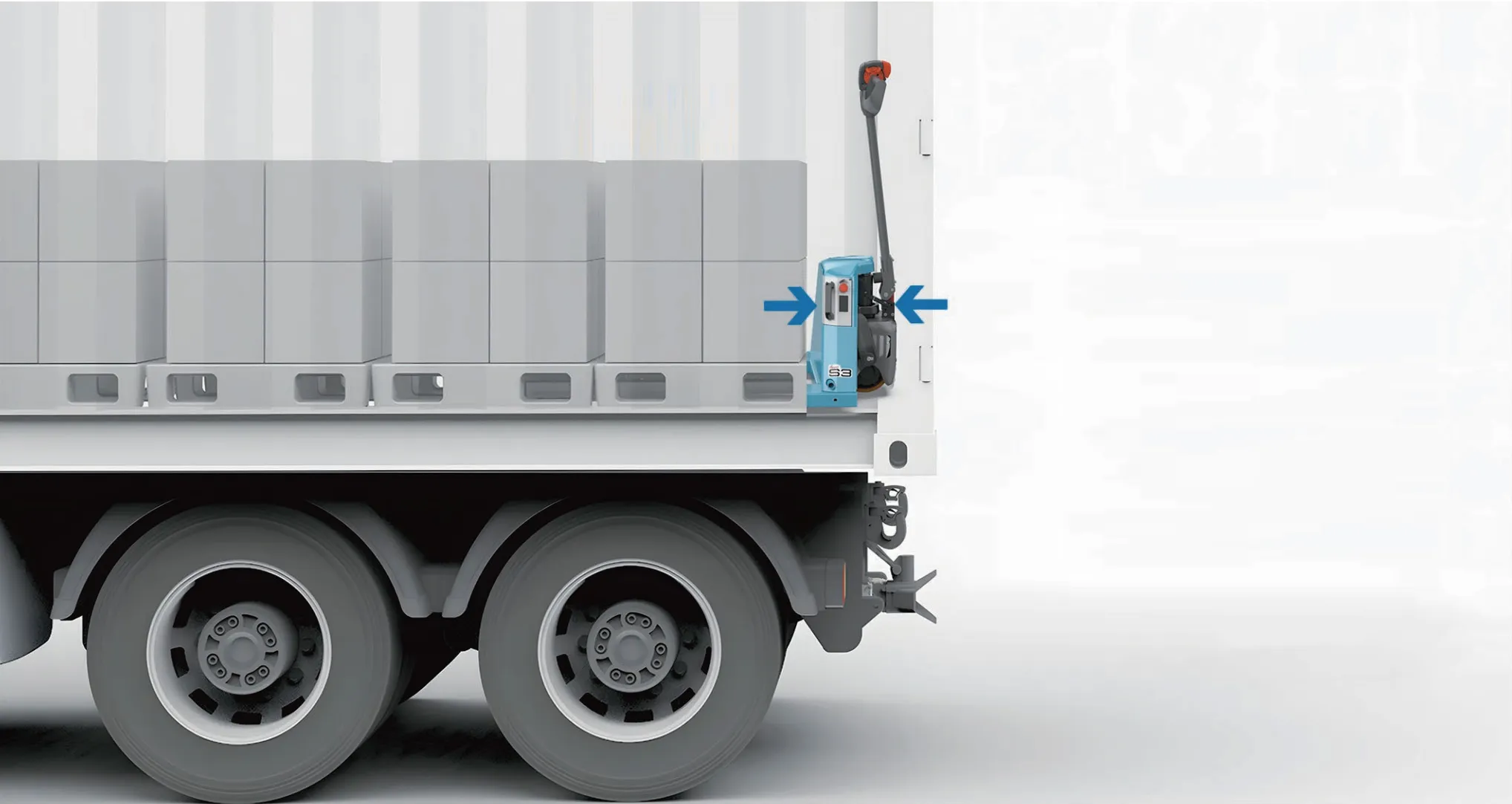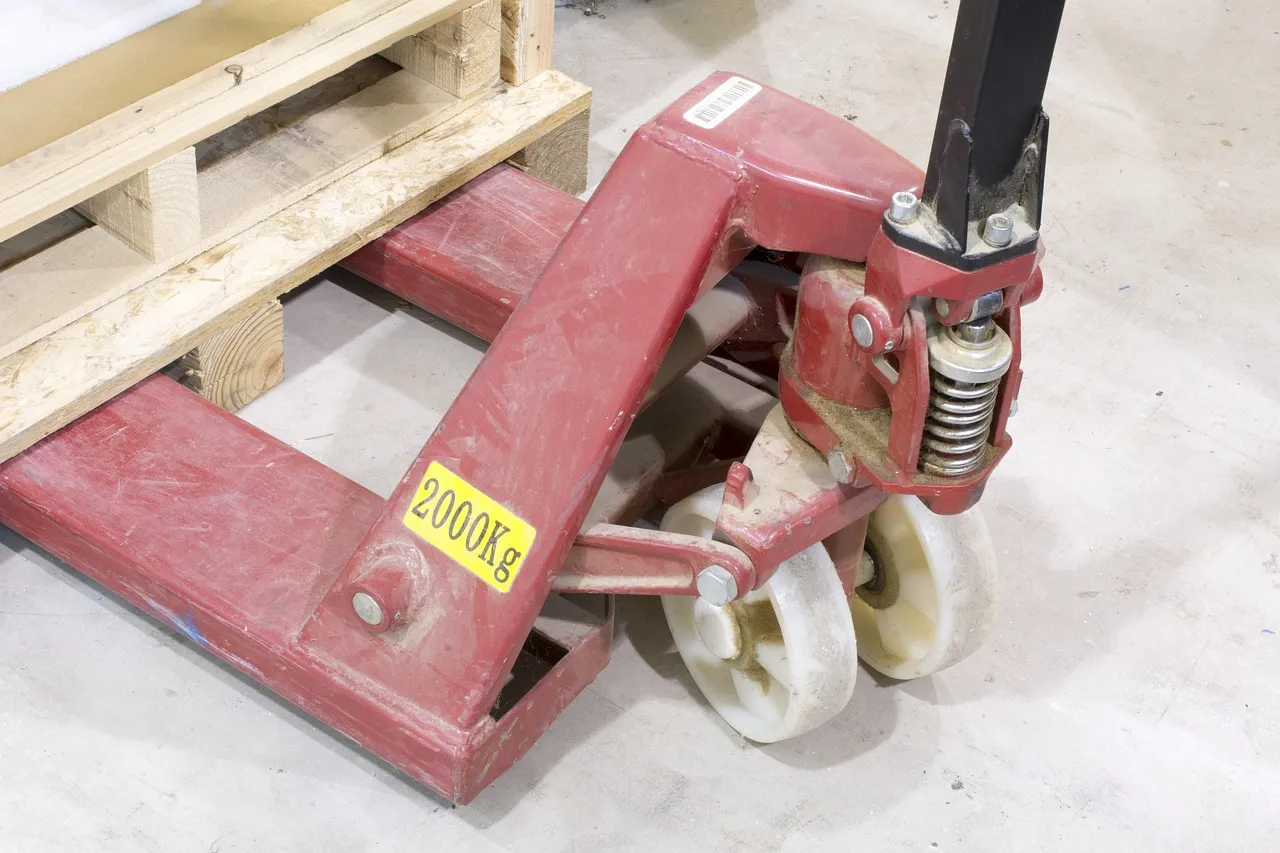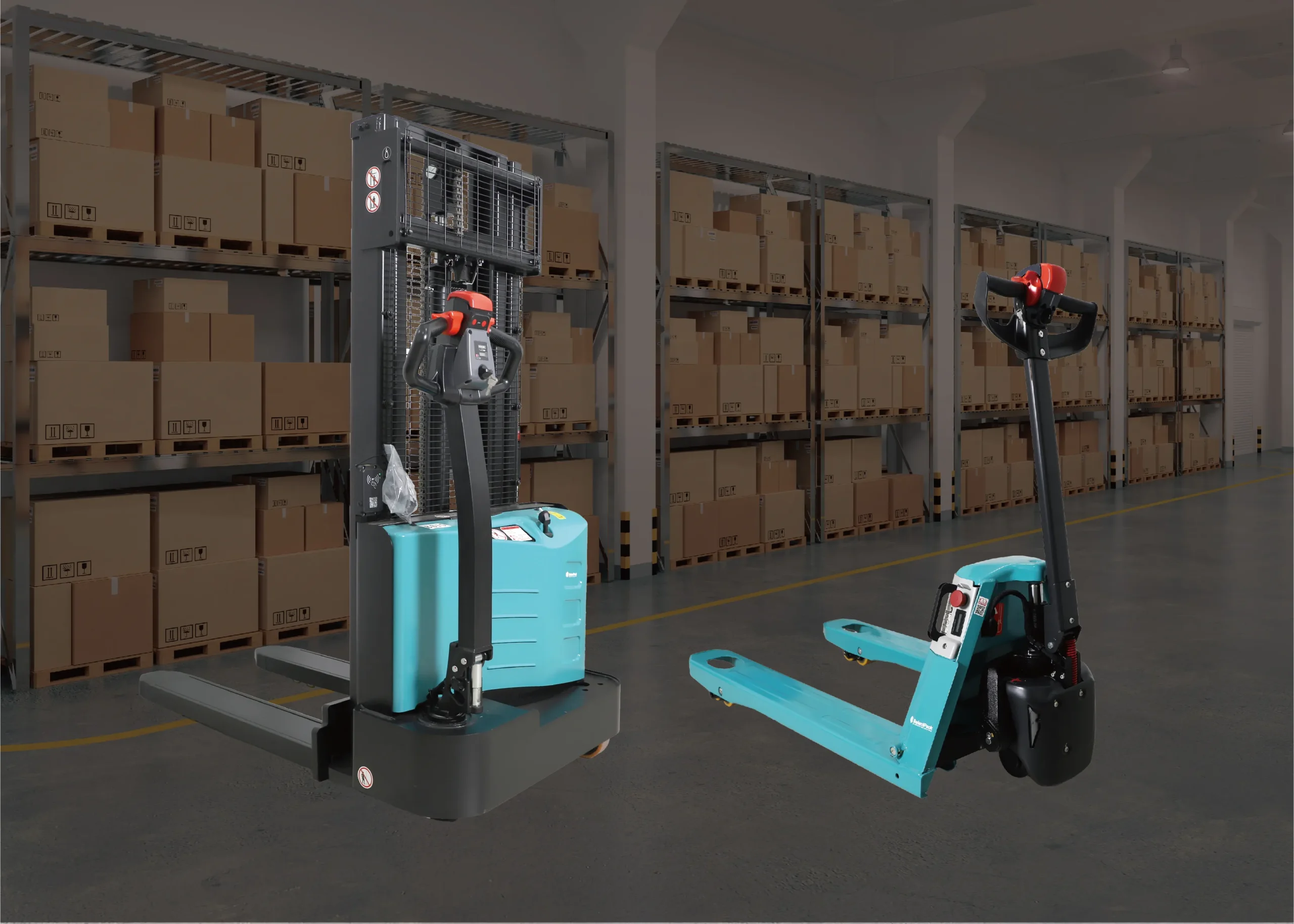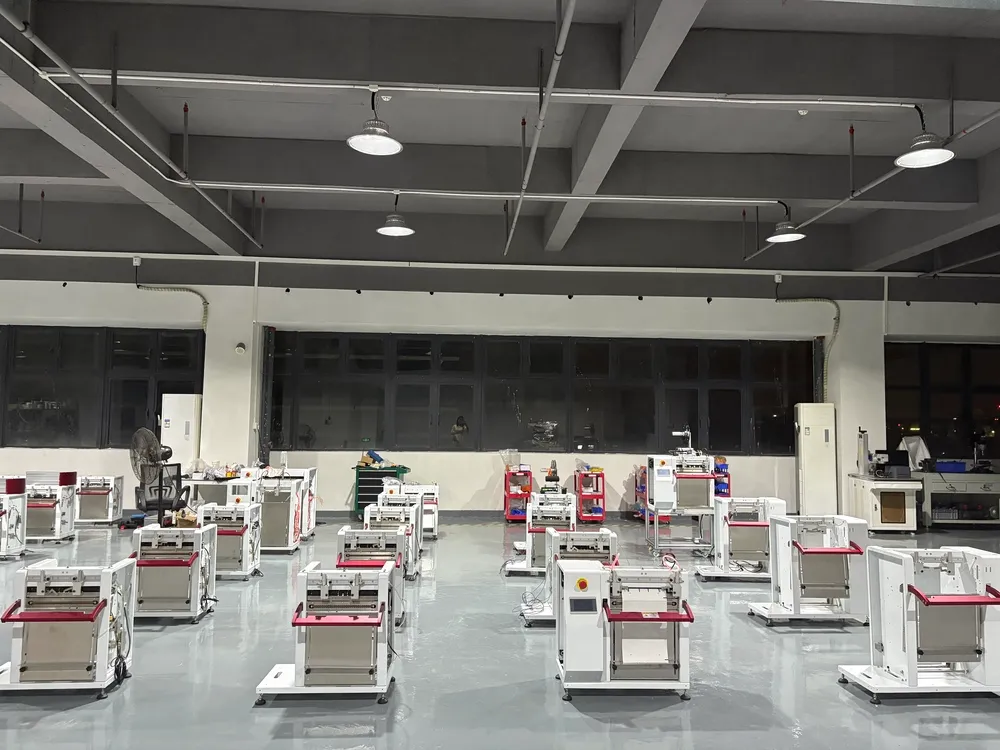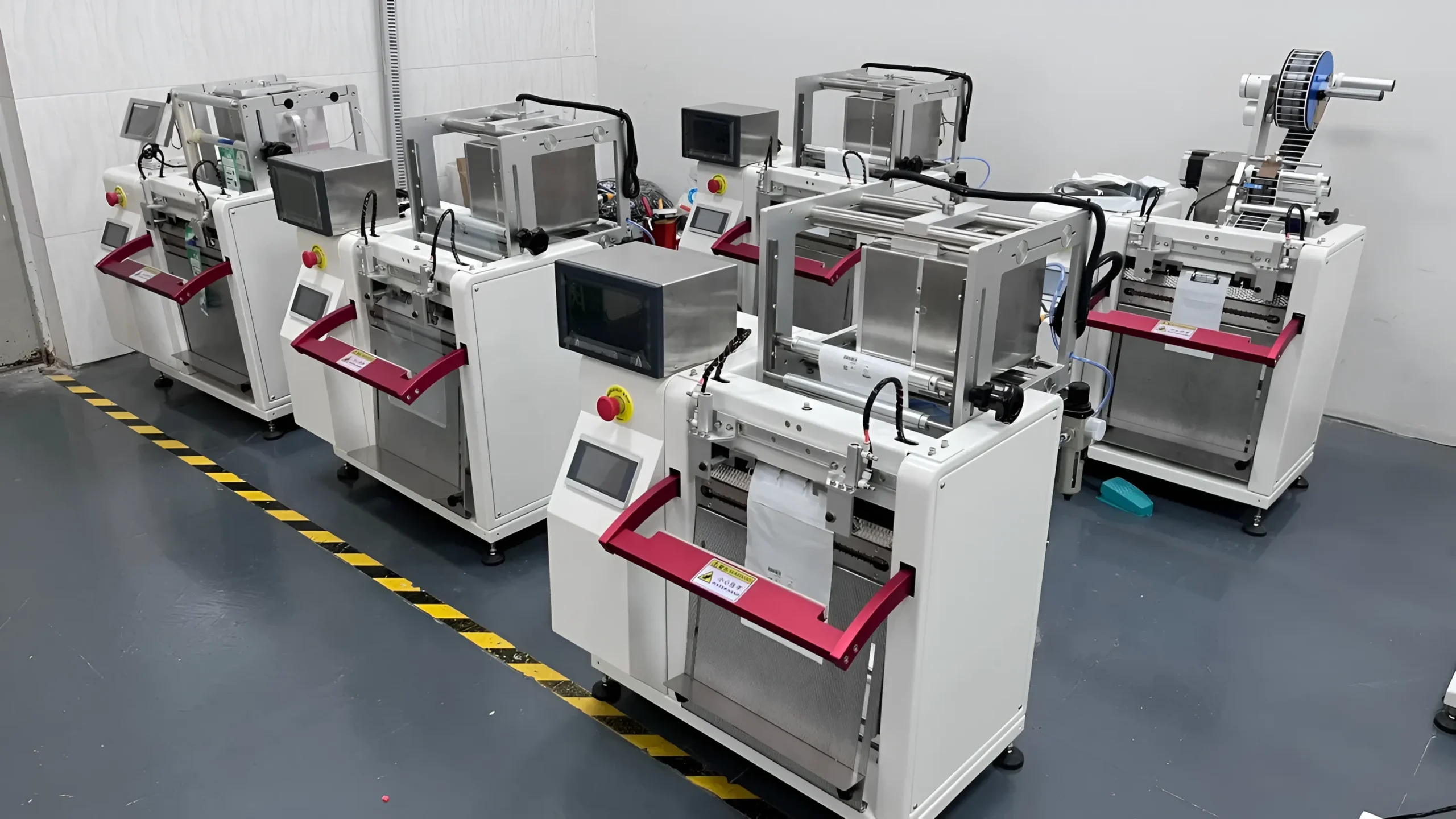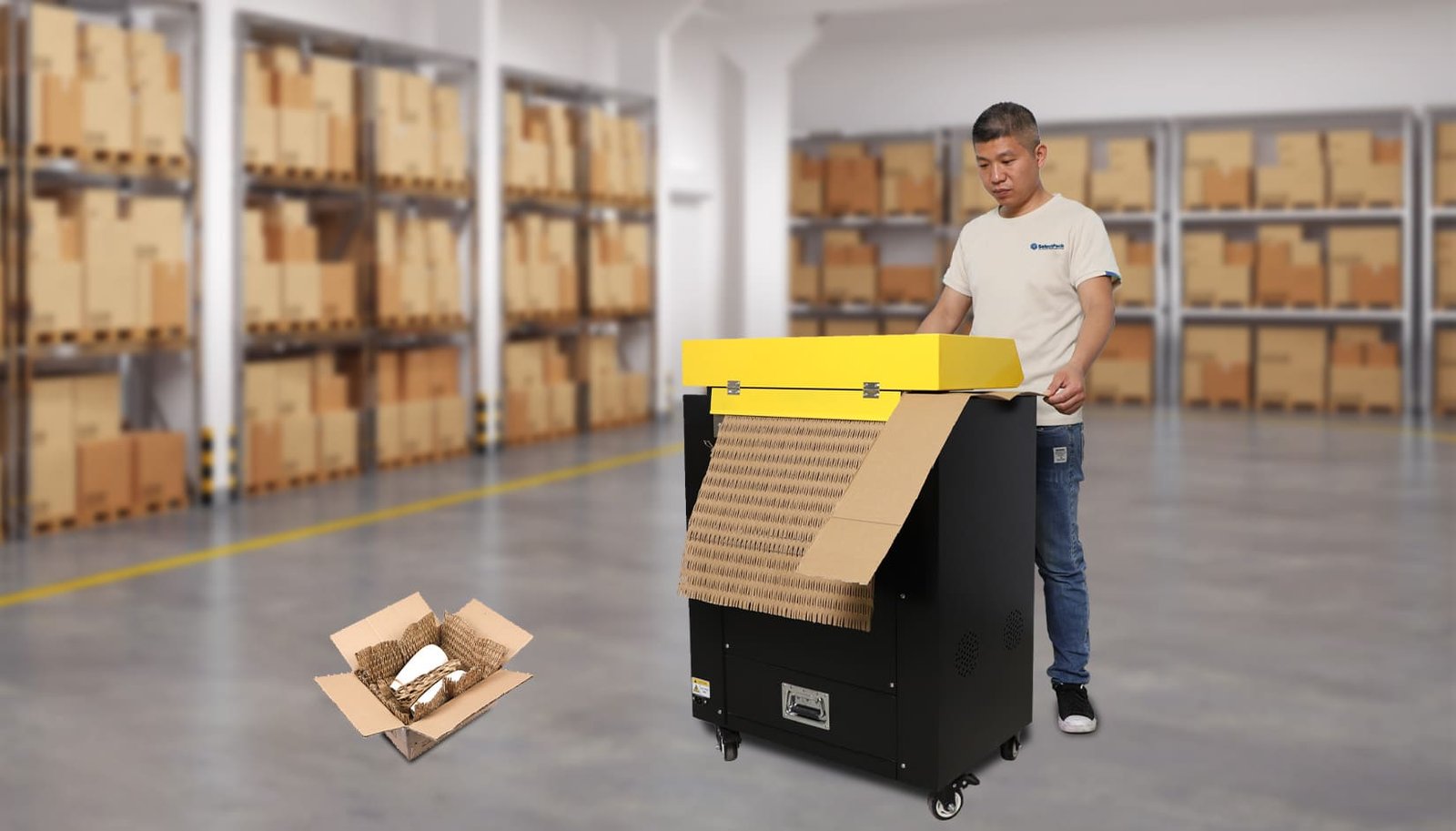Not Every Warehouse Works the Same Way
Some warehouses have a fixed packing station where every pallet ends up. If that’s your setup, great. But what if your pallets are finished across different zones? What if you’re constantly moving goods just to get them strapped?
In that case, the machine might be slowing your people down. You’re bending, dragging, waiting, and working around your tools—instead of having your tools work around you.
That’s where a mobile semi-auto strapping machine like SelectAuto/Elephant comes in.
What Problems Does It Actually Solve?
Elephant isn’t just a convenience upgrade. It’s a problem-solver for real operational pain points:
- Too many steps, too much walking. If your workers are constantly moving pallets to a strapping station, you’re spending time and energy on unnecessary handling.
- Manual tools aren’t keeping up. Once daily pallet volume passes 30–50, traditional tensioners start dragging down your team.
- Short on labor? One person can operate Elephant without assistance, helping you stay productive with fewer hands.
- Your layout keeps changing. Seasonal inventory, shifting SKUs, or client-specific zones? A mobile unit adapts without reinstallation.
- No more bending. With its patented strap feed system, operators don’t have to kneel or crawl under pallets. That means fewer injuries and faster work.
Where Does a Mobile Strapping Machine Like Elephant Fit In?
1. Multi-Station Manufacturing Plants
A mid-sized home appliance factory in Central Europe was facing delays moving finished goods from six different lines to one strapping station. After bringing in mobile units, operators began strapping pallets directly at each line. This change cut average walk time by 40% and reduced forklift congestion between zones.
2. E-Commerce Fulfillment Warehouses
A growing fulfillment center handling fast-moving consumer goods had trouble keeping up during flash sales. Pallets popped up in various packing areas, and workers waited to use two stationary machines. With three mobile strapping units introduced, each zone could process orders independently. Result: smoother order flow and no more waiting.
3. Retail Distribution Hubs
In a national supermarket distribution center, early-morning loading often led to bottlenecks. Trucks lined up while workers queued to strap pallets. By switching to mobile strap feeders, each dock got its own unit, eliminating the queue and shaving 25–30 minutes off their morning cycle.
4. 3PL Operators Handling Diverse Goods
A third-party logistics warehouse in Northern France manages daily inbound and outbound orders for 10+ clients. Fixed machines couldn’t accommodate the range of pallet sizes and packing patterns. By deploying two mobile strap feeders, their team could flexibly work across sectors—without moving the goods twice.
5. China-Based E-Commerce Warehouses
A large-scale e-commerce warehouse in South China handles 5,000–8,000 parcels daily. While most parcels are packed individually, outbound consolidation zones often group multiple orders into large cartons or pallets for batch delivery to regional hubs. During peak seasons like 11.11 and Lunar New Year, over a dozen such consolidation points operate simultaneously.
After adding four mobile strapping machines like Elephant, each zone was able to operate independently. Staff reported less fatigue, and the warehouse manager noted a 25% drop in packing-related delays.
“The best part is we didn’t need to redesign the workflow. The machines adapted to us—not the other way around.”
“The best part is we didn’t need to redesign the workflow. The machines adapted to us—not the other way around.”
Should You Consider One? Here’s a Simple Test:
Check two or more of the following:
- Pallets get strapped in more than one part of your warehouse
- You often shift packing locations due to seasonality or layout
- You want to cut down on unnecessary pallet handling
- Your team is small but your volume is growing
- Your strapping tasks create delays in outbound logistics
If that’s you, then mobile might make more sense than fixed.
Who Benefits Most?
Not every warehouse needs mobility, but if you wear any of these hats, it’s worth considering:
- Warehouse Managers dealing with scattered work zones
- Shift Supervisors coordinating multiple packing flows
- Health & Safety Officers aiming to reduce repetitive strain or bending
- Operations Directors needing ROI on small equipment upgrades
Key Specs and What to Watch For
Before jumping in, check the following:
- Floor conditions: Flat surfaces work best for maneuvering
- Weight awareness: The unit is over 100 kg—make sure it’s manageable
- Battery life: Elephant supports 500–600 cycles per charge
- Pallet compatibility: Supports pallets up to 1.85 m wide and 2.8 m high
- Strap types: Compatible with both PP and PET (12–19 mm)
Bonus: touchscreen controls let you tweak strap feed settings without tools.
Questions We Hear a Lot
Q: Can one person operate it easily?
A: Yes. That’s exactly what it’s designed for.
Q: Is it really that fast?
A: The average cycle takes under 10 seconds—compare that to 45–60 seconds manually.
Q: Will it replace our tabletop semi-auto?
A: Not entirely. Think of it as a supplement for zones your tabletop can’t reach.
Q: Is it safe on all floors?
A: Works best on smooth warehouse concrete. Uneven outdoor yards may not be ideal.
Q: What about training?
A: Minimal. Most teams get up to speed in under 30 minutes.
What Our Customers Say: From Shared Station to Flexible Loading Zones
At a European distribution hub with five outbound loading bays, a single shared strapping machine created serious bottlenecks during peak hours. Pallets queued for strapping, delaying truck departures and pushing overtime costs.
After introducing two mobile units like Elephant—each stationed closer to high-volume docks—staff could strap pallets immediately after staging. Within weeks, wait times were gone, and cut-off compliance improved. The warehouse team reported smoother flow and less pressure on loaders.the best small equipment change we made all year.”
Final Thought: Mobile Isn’t for Everyone. But It Might Be for You.
If you’re strapping pallets in one spot all day, stay with what works. But if you’re dealing with:
- Multiple zones
- Labor limits
- Inconsistent outbound flow
- Safety concerns around bending and lifting
…then it’s time to rethink how and where strapping fits into your process.
Want a second opinion? Send us a quick layout or video. We’ll review it and give you honest feedback—no pressure.


